An Introduction to the Importance of Secure Website Design in Today’s Digital World

In the current era, where the Internet is considered the lifeblood of #businesses and #communications, #cybersecurity has become more important than ever.
Websites, as the storefront and main platform for interaction with customers and users, are constantly exposed to various types of #cyber_attacks.
Therefore, secure website design is no longer a luxury option, but a vital and fundamental necessity for any online entity.
Failure to pay attention to this can lead to the loss of #sensitive_data, damage to #business_reputation, and irreparable financial losses.
This explanatory and educational section delves into the reasons for its importance and how to approach it initially.
Any organization or individual intending to have an effective presence in the online space must incorporate the principles of secure website design into the core of their planning from the very beginning.
Phishing attacks, SQL injection, Cross-Site Scripting (XSS), and DDoS attacks are just a few examples of the countless threats that target websites daily.
These attacks can not only compromise users’ personal information but also disrupt the entire structure of a website and take it offline.
An insecure website is like a house without locks or a guard, easily infiltrated by thieves.
Therefore, investing in secure website design is, in fact, an investment in the long-term stability and success of your online business.
This preventative approach is far more efficient and cost-effective than dealing with the consequences of a cyber attack.
For instance, recovering lost data, repairing damaged reputation, and compensating for legal damages can be far more expensive than implementing preventive security measures.
This highlights the importance of meticulous planning from the initial development stages to prevent major issues in the future.
Awareness of these threats and the necessary measures to counter them is the first step towards creating a trustworthy and secure online environment.
Research shows that 80% of customers trust companies with a professional website more. Does your current website inspire this trust?
With Rasaweb’s corporate website design services, permanently solve the problem of customer distrust and a weak online image!
✅ Create a professional image and increase customer trust
✅ Attract more sales leads and grow your business
⚡ Get a free consultation
Fundamental Principles and Pillars of Secure and Attack-Resistant Website Design
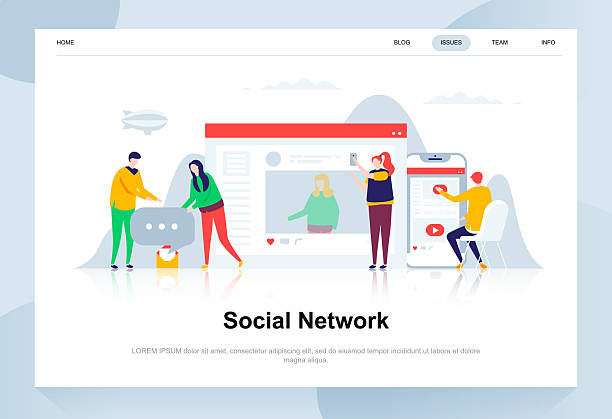
To create a #secure and resilient #website, we need to understand and implement the #fundamental_principles_of_cybersecurity.
These principles form the backbone of true #secure_website_design, and adhering to them from the initial stages of #website_development is essential.
This specialized and guiding section elaborates on these pillars.
The most important principle is #secure_coding, which involves using up-to-date and robust frameworks, validating user inputs (Input Validation) and outputs (Output Encoding) to prevent attacks such as XSS and SQL Injection.
Furthermore, proper Session Management, encryption of sensitive information, and the use of secure communication protocols (like HTTPS) are also vital.
In addition to secure coding, the topics of Authentication and Authorization are also of high importance.
Implementing strong authentication systems, such as using complex passwords, two-factor authentication (2FA), and encrypting passwords in the database, can prevent unauthorized access to user accounts.
Furthermore, the authorization system must ensure that each user has access only to the resources and operations they are permitted to access.
This separation of privileges (Least Privilege) minimizes the scope of damage even if a user account is compromised.
#Secure_server_configuration_management is also a key component.
Servers must be configured with the minimum required services and the strictest security settings.
Removing unnecessary services, closing unused ports, and using powerful firewalls are among these measures.
Finally, conducting regular security audits and tests, including Penetration Testing and Vulnerability Assessment, helps identify weaknesses before attackers can exploit them.
These crucial steps guarantee a secure website design that is stable against daily increasing cyber threats and must be continuously repeated to ensure the website remains resilient against new vulnerabilities.
Common Web Vulnerabilities and Ways to Combat Them in Secure Website Design
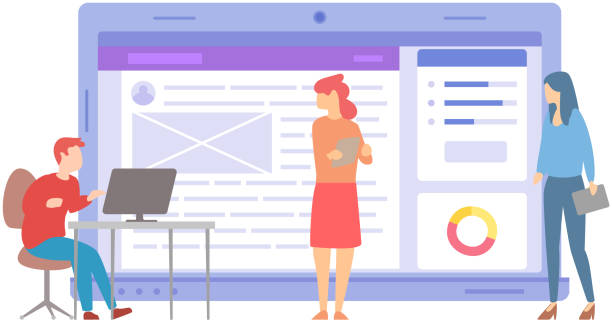
The world of the web, despite all the unparalleled possibilities it offers, is constantly exposed to numerous #security_vulnerabilities.
Identifying and understanding these vulnerabilities is the first step towards secure and stable website design.
This analytical and guiding section examines the most common of these threats and provides practical solutions to combat them.
One of the most well-known attacks is #SQL_injection, in which an attacker attempts to manipulate or extract data from the database by injecting malicious SQL code into website inputs.
The solution is to use “Prepared Statements” and parameterized queries.
Another is #Cross-Site_Scripting or XSS, where an attacker injects malicious JavaScript code into web pages, tricking the victim’s browser.
The solution to combat XSS is to meticulously filter and validate all user inputs and outputs.
Also, #Cross-Site_Request_Forgery (CSRF), where an attacker forces a user to send unauthorized requests to a trusted website, can be prevented by using CSRF tokens.
#Session_Hijacking attacks, where an attacker attempts to steal an active session of a legitimate user, can be controlled by using strong session tokens, the HTTPS protocol, and setting appropriate expiration times for sessions.
#Malicious_file_upload attacks, where an attacker uploads infected files to the server, can be prevented by limiting allowed file types, verifying file signatures, and storing uploaded files in non-executable directories.
Furthermore, Sensitive Data Exposure, which occurs due to improper encryption or insecure storage of information, can be resolved by strong encryption of data in transit and at rest, and by limiting access to it.
Awareness of these issues and continuous implementation of best practices in the development process not only helps strengthen security but also builds user trust.
A website that is continuously checked and rectified for vulnerabilities demonstrates a serious commitment to secure website design, which itself is a significant competitive advantage.
| Vulnerability Name | Brief Description | Main Countermeasure |
|---|---|---|
| SQL Injection | Access or manipulate database with malicious SQL codes | Use of Prepared Statements and Parameterization |
| Cross-Site Scripting (XSS) | Injecting malicious codes (usually JavaScript) into users’ browsers | Validating and encoding all user inputs and outputs |
| Cross-Site Request Forgery (CSRF) | Tricking the user into executing unwanted requests | Use of CSRF tokens |
| Session Management Attacks | Stealing an active user session | Use of HTTPS, strong session tokens, short expiration time |
| Sensitive Data Exposure | Unauthorized access to confidential information (e.g., credit card) | Encrypting data in transit and at rest |
The Role of SSL/TLS Certificates in Website Security and Secure Website Design
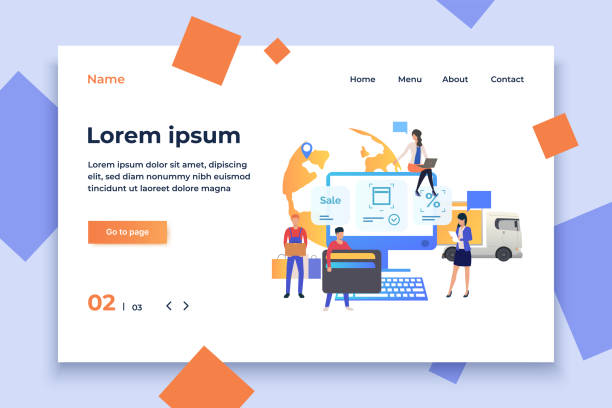
In any discussion about #secure_website_design, the importance of #SSL/TLS_certificates cannot be overlooked.
These certificates are the backbone of secure communications on the Internet and play a vital role in maintaining #privacy and #user_trust.
This educational and explanatory section describes the functionality of SSL/TLS and why they are important.
SSL (Secure Sockets Layer) and its newer, more secure version, TLS (Transport Layer Security), are protocols that encrypt communication between a web browser (client) and a web server.
This encryption protects information exchanged between the user and the website, including login credentials, credit card details, and personal data, from unauthorized access during transit.
When a website uses HTTPS (the secure version of HTTP using SSL/TLS), a green lock icon or the word “Secure” appears in the browser’s address bar, indicating a secure connection.
This not only assures users that their data is safe but also plays a significant role in #SEO; as search engines like Google rank HTTPS-enabled websites higher.
SSL/TLS certificates, in addition to encryption, also verify the server’s identity.
This means the user can be sure they are connected to the legitimate website and not a phishing site attempting to steal information.
There are various types of certificates, from Domain Validated (DV) certificates that only verify domain ownership, to Organization Validated (OV) and Extended Validation (EV) certificates which offer a higher level of identity verification.
Choosing the appropriate certificate type depends on the security needs and the type of business.
Overall, implementing SSL/TLS is one of the first and most fundamental steps in secure website design, which not only guarantees security but also significantly contributes to the website’s credibility and ranking.
Its absence can quickly undermine a website’s credibility and deter users.
Are you concerned about your e-commerce website’s low conversion rate and not achieving your desired sales?
Rasaweb is your specialized solution for a successful e-commerce website.
✅ Significant increase in conversion rates and sales
✅ Professional and user-friendly design to attract customer satisfaction
⚡ Ready for a transformation in online sales? Get a free consultation!
Continuous Updates and Patch Management: An Essential Solution for Secure Website Design

One of the most important but often overlooked aspects of #secure_website_design is continuous_updates and #Patch_Management.
This news and guide section highlights the importance of this topic and shows how neglecting it can lead to security disasters.
Developers of software, Content Management Systems (CMS), frameworks, and plugins are constantly discovering and fixing new #security_vulnerabilities.
Each update or patch released usually includes fixes for these vulnerabilities and security enhancements.
When a website or server uses outdated and unpatched software, it effectively leaves backdoors open for attackers.
Many successful cyberattacks, including widespread breaches reported in the news, result from exploiting vulnerabilities for which patches had been released long ago but were not applied by system administrators.
For example, major ransomware attacks like WannaCry exploited disclosed vulnerabilities in Windows for which Microsoft had released patches much earlier.
Therefore, an effective strategy in secure website design includes a well-defined plan for regularly updating all website components: from the server’s operating system to web server software (like Apache or Nginx), databases (MySQL, PostgreSQL), programming languages (PHP, Python, Node.js), Content Management Systems (WordPress, Joomla, Drupal), and all used plugins and themes.
This process should involve testing updates in a development or staging environment before applying them to the production environment to ensure no operational issues arise with the website.
Patch management also requires continuous monitoring of security news and alerts from reputable sources so that necessary actions can be taken immediately upon the release of emergency patches.
This proactive approach provides a critical layer of defense against new threats and plays an undeniable role in maintaining the long-term security of the website.
Strong Password Policies and Multi-Factor Authentication for Secure Website Design

One of the common weaknesses in #website_security, especially in the #user_login section, is #weak_passwords and #insecure_authentication_methods.
This specialized and explanatory section addresses the importance of implementing #strong_password_policies and using #Multi-Factor_Authentication (MFA) within the framework of a secure website design.
Passwords are the first line of defense against unauthorized access.
A weak password, such as “123456” or “password,” can easily be guessed by attackers or broken using dictionary and brute-force attacks.
To counter this threat, websites must enforce strict password policies.
These policies include requiring users to use long passwords (at least 12-16 characters), a combination of uppercase and lowercase letters, numbers, and special characters.
Also, storing passwords in Plain Text should be strictly avoided, and instead, strong cryptographic hashing functions (like bcrypt or Argon2) along with “Salt” should be used to store passwords so that even if the database is breached, passwords cannot be recovered.
Furthermore, the system should prevent users from reusing old passwords and impose temporary restrictions on accounts that have had multiple failed login attempts.
But even with the strongest passwords, the risk of social engineering and phishing attacks exists.
This is where #Multi-Factor_Authentication (MFA) comes into play.
MFA, often known as Two-Factor Authentication (2FA), adds an extra layer of security where, in addition to the password, the user must provide another verification factor (e.g., a code sent to a smartphone, a fingerprint, or a hardware token).
This means that even if an attacker knows the user’s password, they cannot access the account without access to the second factor.
Implementing MFA for all user accounts, especially administrative and sensitive accounts, is a very important and essential step towards increasing security and achieving a secure website design that elevates the protection of user data and privacy to a higher level.
Regular Backups and Disaster Recovery Plan: A Key Approach for Secure Website Design
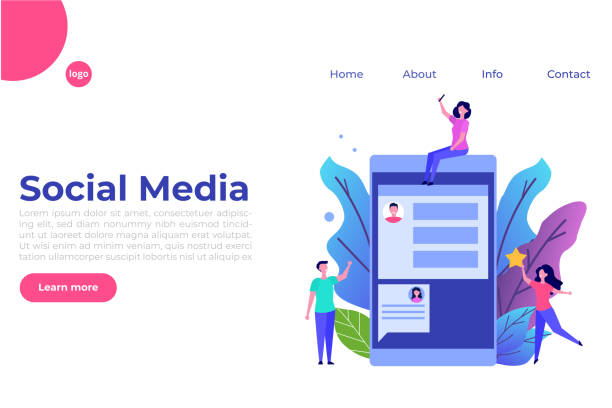
Even with the best #secure_website_design and the most precise protective measures implemented, no website is completely immune to unforeseen incidents such as #hardware_failure, #unsuccessful_cyberattacks, or even #unintentional_human_error.
This guiding and specialized section addresses the critical importance of #regular_backups and having a #Disaster_Recovery_Plan.
These two elements are your last line of defense against data loss and website downtime.
Without a robust backup plan, a minor incident can turn into a major disaster, leading to the complete loss of the website and its data.
Regular backups must include all website components: website files (code, images, CSS and JavaScript files), database, as well as server settings and any custom configurations.
These backups should be performed automatically and at an appropriate frequency; for example, daily for websites whose data changes rapidly, or weekly for websites with fewer changes.
More important than the backup itself is storing them in secure and off-site locations.
Using secure cloud storage, external hard drives in another location, or dedicated backup servers are common methods.
Additionally, backups should be periodically tested to ensure their recoverability; what good is a backup if it cannot be restored? The #Disaster_Recovery_Plan (DRP) goes beyond just backing up.
It is a comprehensive document that outlines the precise steps for restoring website operations to normal after a major incident.
This plan should include: identifying the incident response team, defining roles and responsibilities, step-by-step procedures for system and data recovery, and emergency communications.
The DRP must be regularly reviewed and updated, and relevant team members should receive necessary training and conduct simulated exercises.
A ready disaster recovery plan minimizes website downtime and ensures that even in the worst-case scenario, your online business can quickly resume operations.
This comprehensive approach is an inseparable part of a secure and resilient website design.
| Backup Type | Description | Advantages | Disadvantages |
|---|---|---|---|
| Full Backup | Copying all data every time a backup is made | Simplest and fastest recovery method | Requires large space, time-consuming |
| Incremental Backup | Copying only data that has changed since the last backup (full or incremental) | Requires less space, faster | More complex and time-consuming recovery |
| Differential Backup | Copying data that has changed since the last full backup | Simpler recovery than incremental, faster than full | Requires more space than incremental |
Penetration Testing and Vulnerability Assessment: Essentials for Secure Website Design
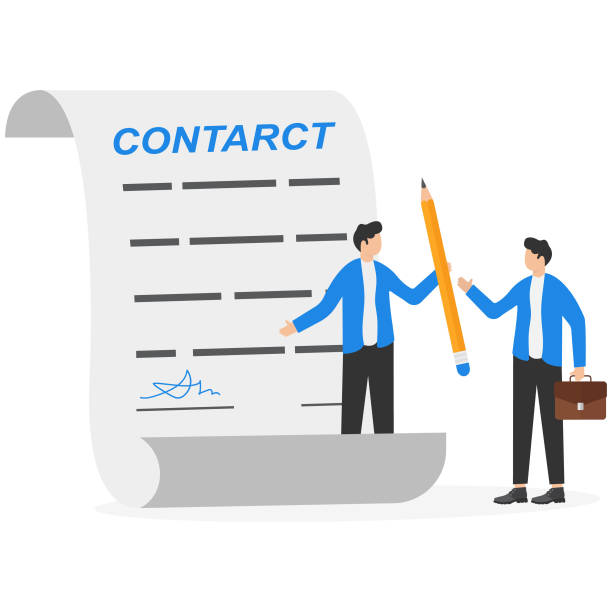
After implementing #security_measures and #secure_website_design, the question arises: is the website truly secure? The answer to this question can be obtained by conducting #Penetration_Testing and #Vulnerability_Assessment.
This analytical and engaging section explains these two vital methods in securing websites and demonstrates how system weaknesses can be discovered through an aggressive yet controlled approach.
Vulnerability assessment is a systematic process for identifying security weaknesses in a system, network, or software.
This is typically done using automated vulnerability scanning tools that quickly provide a list of known vulnerabilities.
In contrast, penetration testing is a sanctioned simulation of a real #cyberattack conducted by security professionals (ethical hackers) with the aim of discovering vulnerabilities that scanners might miss or identifying combined paths of vulnerabilities to infiltrate the system.
A penetration tester attempts to attack the system from the perspective of an attacker, not only identifying vulnerabilities but also demonstrating how they can be exploited and to what extent penetration is possible.
This process can be very engaging and challenging, as it requires creative thinking and the use of various techniques.
The final penetration test report includes details of discovered vulnerabilities, their risk level, and practical solutions for remediation.
This report provides a valuable roadmap for the development and security team to address weaknesses and significantly enhance website security.
Regular penetration testing and vulnerability assessment, especially after major changes to code or infrastructure, are among the most important measures to ensure a secure and dynamic website design.
These processes not only help identify current issues but also lead to continuous improvement of defensive strategies by providing deep insight into the security posture.
In fact, it is an endless game between attacker and defender, where the defender must always be one step ahead.
Are you tired of your company’s website not meeting your expectations? With Rasaweb, design a professional website that truly represents your business.
✅ Increase new customer acquisition and sales leads
✅ Enhance your brand’s credibility and trust with your audience
⚡ Get a free website design consultation!
User Awareness and the Role of Education in Sustainable Secure Website Design

In any security chain, the #weakest_link is usually the human factor.
Even with the strongest #secure_website_design and the best #defensive_tools, if website users lack sufficient awareness, they can inadvertently open doors for attackers.
This educational and thought-provoking section addresses the importance of #user_awareness and the role of education in strengthening overall website security, posing the question: “Are your users your weakest security link?” Attacks such as #phishing, #social_engineering, and #malware are often based on deceiving users.
Attackers, instead of trying to break complex systems, prefer to obtain sensitive information by deceiving individuals.
For example, a cleverly designed phishing email can direct a user to a fake site to enter their login information or download an infected attachment.
Educating users on how to identify these attacks and the importance of adhering to security principles is a vital investment in enhancing overall website security.
These trainings should include the following:
- Identifying phishing emails and suspicious messages: Educating on how to check sender addresses, links, and message content.
- Importance of strong and unique passwords: Emphasizing not reusing passwords across different sites and using password managers.
- Enabling Multi-Factor Authentication (MFA): Encouraging and educating users to enable MFA for all their accounts.
- Avoiding clicking on unknown links: Educating caution when opening links and downloading files from untrusted sources.
- Keeping software updated: The importance of updating operating systems, browsers, and security software.
A continuous and engaging educational campaign can help increase user awareness and transform them into a security asset, not a liability.
Does your website only care about the technical aspects of secure website design, or does it also empower its users? The answer to this question determines the difference between a truly secure website and one with hidden vulnerabilities.
User interaction and participation in the security process are vital and often overlooked elements.
The Future of Secure Website Design and Upcoming Challenges in the Digital World

The world of #cybersecurity is constantly evolving; with every technological advancement, #new_threats also emerge.
This news and analytical section takes a look at the #future_of_secure_website_design and the #upcoming_challenges in this field.
As websites become more complex and rely increasingly on #advanced_technologies like #Artificial_Intelligence (AI) and the #Internet_of_Things (IoT), new dimensions are added to security issues.
Attackers also use AI to automate attacks, identify vulnerabilities, and even generate highly convincing phishing content.
One of the biggest future challenges is combating #advanced_AI-driven_attacks.
These attacks can behave dynamically, learn defensive patterns, and automatically search for new weaknesses.
In response to these threats, #AI_in_cybersecurity is also being developed to intelligently identify and react to threats.
#Machine_learning models can detect anomalous traffic patterns and predict DDoS or intrusion attacks.
Another is the emergence of #quantum_computing.
Although still in its early stages, quantum computing has the potential to break many current encryption algorithms.
This necessitates the development and implementation of #post-quantum_cryptography that is resistant to quantum computer attacks.
Websites must prepare for migration to these new standards.
Furthermore, the growth of #IoT and the connection of more devices to the internet significantly expands the attack surface.
Every connected device is a potential entry point for attackers that can be used as a stepping stone to access related websites and networks.
Secure website design in the future will require a more comprehensive approach, going beyond just secure coding.
This will include security at the network layers, devices, artificial intelligence, and even Decentralized Identity management.
The concept of #Zero_Trust, which emphasizes not trusting any user or device, even within the network, will increasingly gain importance.
The future of secure website design will be a continuous and complex battle requiring innovation, collaboration, and continuous vigilance from developers, system administrators, and users.
Frequently Asked Questions
| Row | Question | Answer |
|---|---|---|
| 1 | What is secure website design? | The process of designing and developing websites that are resistant to cyberattacks and protect user data and privacy. |
| 2 | Why is website security important? | To prevent data breaches, financial losses, damage to company reputation, and maintain user trust. |
| 3 | What are some common website security threats? | SQL Injection, XSS (Cross-Site Scripting), CSRF (Cross-Site Request Forgery), weak authentication, and unpatched software. |
| 4 | What is SSL/TLS and what is its role? | Protocols for encrypting data between the user’s browser and the website server, ensuring secure and private communication. |
| 5 | How can SQL Injection attacks be prevented? | By using Prepared Statements/Parameterized Queries, input validation, and ORMs (Object-Relational Mappers). |
| 6 | What is the role of a Web Application Firewall (WAF) in security? | A WAF monitors and filters HTTP traffic between a web application and the Internet to prevent malicious attacks. |
| 7 | Why is regular updating of software and libraries essential? | Updates include patches for known security vulnerabilities that attackers can exploit. |
| 8 | How can XSS attacks be prevented? | By sanitizing and escaping all user inputs before displaying them on the web page and using Content Security Policy (CSP). |
| 9 | What does the Principle of Least Privilege mean? | It means that users and systems are granted only the minimum necessary permissions to perform their tasks, preventing unnecessary access to resources. |
| 10 | What is the importance of proper user session management? | To prevent user session hijacking and unauthorized access to user accounts through secure and expiring session tokens. |
And other services of Rasa Web Advertising Agency in the field of advertising
How to differentiate innovative cosmetic products in advertisements
The role of social networks in strengthening classifieds website ads
Common mistakes by manufacturers in posting cosmetic product ads
How to create local ads for cosmetic products
Benefits of B2B targeting in cosmetic product ads
And over a hundred other services in the field of internet advertising, advertising consulting, and organizational solutions
Internet Advertising | Advertising Strategy | Advertorial
🚀 For your business to be seen and thrive in the digital world, Rasaweb Afarin Digital Marketing Agency, specializing in areas such as personal website design, SEO, and online advertising campaign management, is your partner to make your brand shine.
📍 Tehran, Mirdamad Street, Next to Bank Markazi, Southern Kazeroon Alley, Ramin Alley, No. 6




